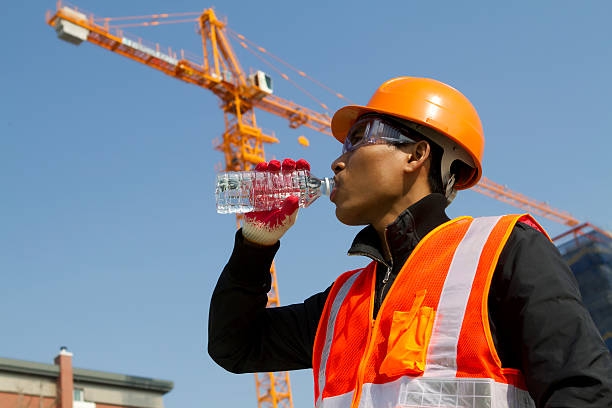Australian Summers are notorious for producing some incredibly hot days, and Mr Scaffold is very aware of the effects that working outside on hot days can have on worker performance, efficiency and safety.

In this post we would like to discuss some of the techniques that are utilised to minimise the risks of personal heat stress and manage hydration on hot days.
Mr Scaffold teams are regularly working outside in unsheltered conditions, therefore they are generally acclimatised to hot and humid conditions. This coupled with the physical fitness of regular scaffold workers will generally enable them to have a lower perception of effort, decreased heart rate, lower core body temperatures and increased sweat production (and therefore evaporative cooling function) than non-heat acclimatised workers. This has a coupled effect of requiring an increased fluid intake to supply the increased sweat rate.
Mr Scaffold recommends the following before attempting to work on a scaffold on a hot or humid day:
- Begin work adequately hydrated. Ensure fluid has been consumed well before you start your work.
- Maintain hydration state whilst working. (Urine may become darker and reduce in volume as dehydration takes effect)
- Carry a drink bottle at all times.
- Understand the effects of pre-existing medical conditions and personal habits on susceptibility to heat stress/ilness (eg. overweight, excessive alcohol consumption)
- Drink fluid consistently throughout the day. Recommended volume is 125ml every 10 minutes.
- Consume food at regular meal breaks in order to maintain energy and replace electrolytes.
- Understand the effects caffeinated drinks will have on hydration levels and rehydration capacity.
- Know the importance of adequate sleep and rest. Fatigue can be fatal.
The importance of educating yourself and fellow workers about hydration management must be stressed as we move into Summer. Understanding hydration assessment methods along with the signs, symptoms and dangers of dehydration is critical.
Thirst is a relatively late yet important sign of dehydration, the body has likely already reached a 2% dehydration and is a warning signal that sufficient fluids are not being consumed. Other symptoms can include reduced cognitive functions (concentration, alertness and reaction times) increased heart rate, and loss of strength and/or stamina.
Dehydration at levels as low as 3% have a significant impact on abilities, being comparable to blowing 0.08 on a breathalyser. Dehydration at 4% creates confusion and ruins co-ordination and reaction times.
Dehydration at 15% will result in Death.
Mr Scaffold wants everyone to be safe, so whilst you are out there, take care to ensure you stop and drink whilst working on your scaffold. A simple mistep due to dehydration may be relatively harmless at ground level, but catastrophic whilst on an elevated platform.
Stay safe this summer.


